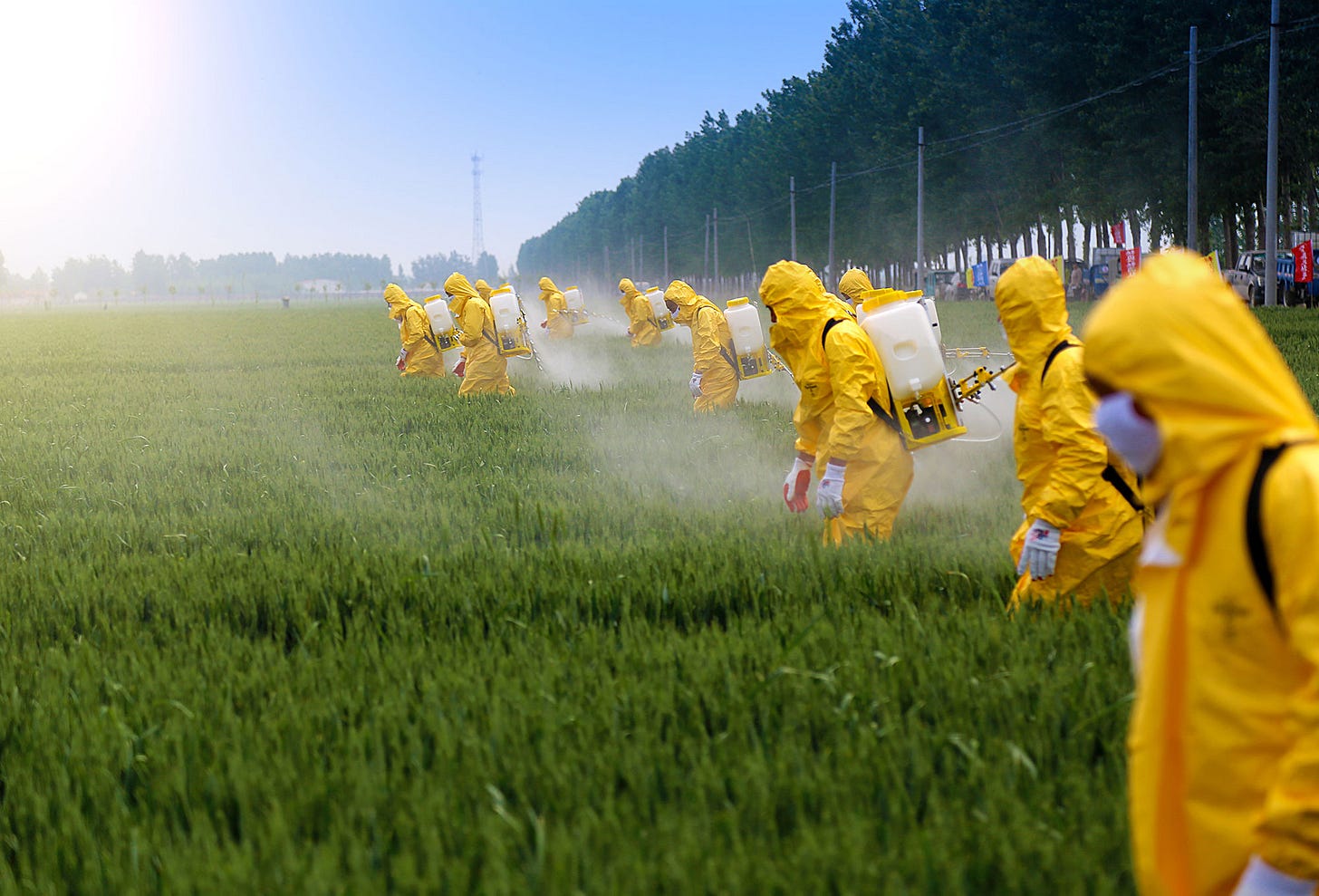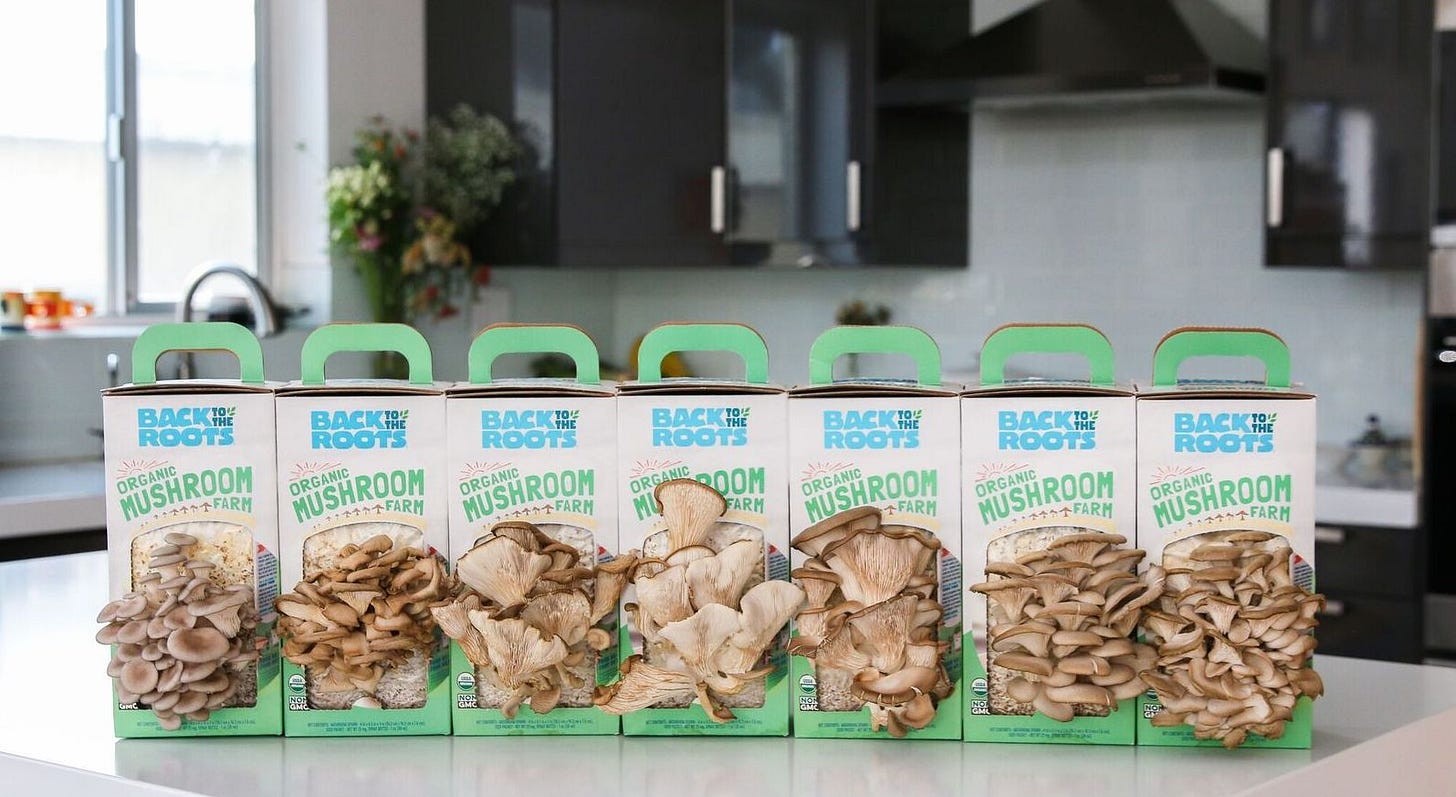👨🔬 Our agrochemical catch 22: How chemistry replaced common sense
Welcome back to The Regeneration Weekly, a newsletter delivering regenerative food and agriculture news to your inbox every Friday. Not a subscriber yet?
Health: Since the emergence of the chemical industry after World War II, agriculture has grown increasingly dependent on herbicides and insecticides to control weeds, fungi, and pests that crowd cropland. In 1970, Dr. John Franz, a Monsanto chemist, identified the herbicidal activity of glyphosate, the main active ingredient in Roundup weedkiller. In the time between its commercialization in 1974 and 2014, over 3.5 billion pounds of glyphosate-based herbicides (GBHs) were applied to US croplands, two-thirds of which was sprayed in the ten years prior. Nowadays, glyphosate residue can be found in soil, crops, animals that feed on crops, humans, freshwater, and the organisms that live there. Despite the prevalence of pesticides in modern agriculture, a growing body of scientific evidence documents how the overuse of GBHs is a major contributor to the current loss of biodiversity (commonly referred to as the 6th mass extinction).
After spraying glyphosate on undesirable plants, the herbicide rapidly moves to areas of active growth. It nimbly blocks the activity of the enzyme referred to as EPSPS, which plays an important role in the shikimic acid pathway. By obstructing EPSPS, glyphosate prevents over 125 kinds of plants from producing the essential proteins they need to survive. Yet the herbicide often travels from the roots of the targeted weed into the ground, where it comes in contact with the roots of beneficial plants and bacteria found in soil. As a result, US croplands are now eroding 10 times faster than they can be replenished.
In truth, the use of Roundup didn’t surge until 1996 when Monsanto unveiled “Roundup Ready” (RR) soybeans - the first genetically engineered (GE) seeds that survive glyphosate applications. Soon after, the agrochemical giant debuted patented lines of corn, cotton, and alfalfa with a list of alluring benefits: higher yields, lower input costs, and the potential to chip away at agriculture’s environmental impact. In theory, seeding herbicide-resistant plants would help farmers make fewer applications of herbicides without having to resort to more severe treatments. But in contrast to Monsanto’s stated goal, the use of RR crops increased US herbicide use by 527 million pounds between 1996-2011. Moreover, the amount of GBHs applied to GE corn, cotton, and soybeans rose 10-fold from 15 million pounds in 1996 to 159 million pounds in 2012. And by 2017, Monsanto raked in $10.9 billion in net sales for its RR crops that are tolerant to an ever-growing number of powerful chemicals.

American farmers’ near-ubiquitous application of GBHs has led to a surge in superweeds with a high tolerance to Roundup. In 2013, nearly 70 million acres of American farmland (an area the size of Wyoming) were infested with glyphosate-resistant weeds across more than 22 states. This systemic issue has cost farmers over $1 billion in crop damages and forced many onto the pesticide treadmill. Once on this metaphorical exercise machine, growers must spray superweeds with more and more potent pesticides. The costs of such inputs were as high as $73 per acre (2017).
In addition to more chemical treatments, superweeds require more frequent plowing, which increases the risk of soil erosion. Moreover, the use of GBHs damages the microbial life found in healthy soil that creates organic material essential to plants. When over-applied to the land, glyphosate reduces a plant's ability to absorb micronutrients while contaminating water sources via leaching. To make matters worse, GBHs can also negatively impact the bacterial symbionts of animals living near agricultural sites. Exposure of bees to glyphosate, for instance, can upset their beneficial gut microbiota, reducing their effectiveness as pollinators.
It is clear that synthetic solutions to tackle weed and pest management merely increase food prices, raise farm costs, and decrease biodiversity. A safer way forward is to halt the agrochemical arms race and to shift our attention towards ecological approaches to farming. The US government should incentivize farmers to return to non-chemical practices that emphasize soil building rather than soil supplementing. Regenerative methods like silvopasture and cover crops offer growers a chance to hop off the pesticide treadmill, in addition to restoring their yields, controlling weeds, and increasing soil complexity while reducing the use of herbicides by 90 percent.
Watch: In an attempt to diversify Hawaii's economy, policymakers welcomed the world’s largest chemical companies to use Kauai’s tropical climate and fertile soil to test genetically engineered seeds (GE) and crops year-round. Biotech corporations including Syngenta, Pioneer DuPont, BASF, and Dow Agrosciences plant GE seeds and then spray them with hundreds of tons of Restricted Use Pesticides, which pose unreasonable adverse effects to the environment. When they identify crops that can survive the toxin treatments, they begin the process of commercialization. Poisoning Paradise is a documentary detailing the ongoing struggle to advance new legislation that will reverse this injustice and usher in a new wave of sustainable farming practices. Click here to stream the film. For additional information about pesticides, check out Poisoning Paradise’s resources page.
Shop: Back to the Roots is on a mission to help reconnect every family and kid across the country to the magic of growing their own food. To do that, they’re building the organic garden brand for a new generation. Back to the Roots grew out of a college kitchen experiment into a national business offering simple grow kits, in addition to a wide selection of organic seeds. And each one of their products is part of a #GrowOneGiveOne campaign – post a photo of your Back to the Roots garden and they’ll donate a gardening kit + curriculum to an elementary school classroom of your choice.
Disclaimer: The Regeneration Weekly receives no compensation or kickbacks for brand features - we are simply showcasing great new regenerative products.
The Regeneration is brought to you by Wholesome Meats | Soilworks | PastureMap.






To begin; the photo at the beginning is beyond misleading. That is not how US farmers spray crops, and almost no one sprays wheat with glyphosate. The odds that this is a U.S. farm spraying glyphosate is one in a million. Moreover, modern conservation practices have greatly reduced soil erosion in the United States, contrary to the suggestions of this article. Anyone who disagrees should research the dust bowl. Rather than intentionally misleading readers for personal gain and selling organic “magical beans”, why don’t you take a moment and acknowledge the fact that glyphosate has saved millions of lives from starvation across the globe. This nation is so far removed from its food sources it’s sad.